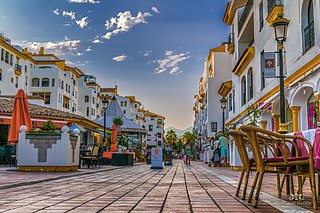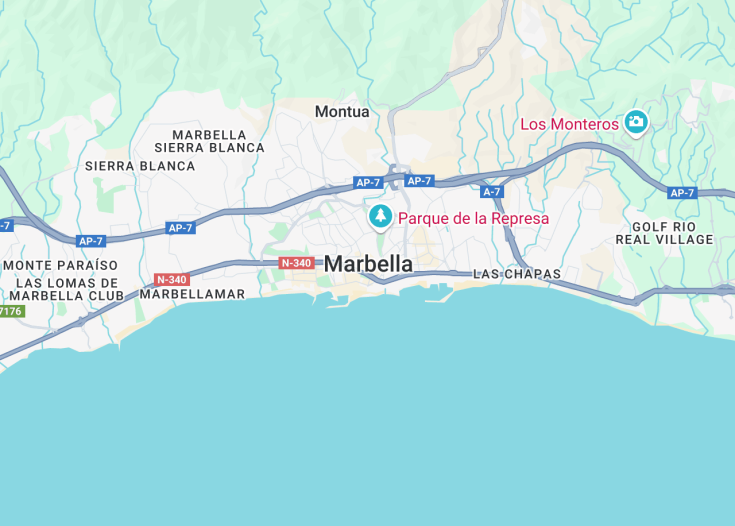Marbella stands as a jewel on Spain’s Costa del Sol, renowned for its blend of natural beauty and upscale luxury. This enticing city offers sun-drenched beaches, historic architecture, and a bustling nightlife scene. Marbella is equally famed for its luxurious resorts, world-class golf courses, and the exclusive marina of Puerto Banús, teeming with designer shops and yachts. It serves as an ideal destination for travelers seeking both relaxation and opulence, encapsulated within a culturally rich setting. Visitors can immerse themselves in its vibrant art scene, savor fine cuisine, or explore ancient ruins.
For an enriching experience, visit during the spring when Marbella’s weather is pleasantly warm and the tourist crowds are manageable.
To truly appreciate Marbella’s charm, consider a guided tour of the Old Town, where centuries-old buildings and cobblestoned streets tell the city’s storied past.
Top things to do & see in Marbella
Select the following sights and activities to discover best tickets and tours available in Marbella.
Marbella: A Touch of Mediterranean Elegance
| Country | Spain |
| Time in Marbella | GMT+1 |
| Language spoken | Spanish |
| Population | 141,463 (Source: latest municipal register) |
| Currency | Euro (€, EUR) |
| Airports |
|
Marbella, situated in the heart of Spain’s Costa del Sol, is a city steeped in history and modern luxury. Originally a small fishing village, it has transformed into one of Europe’s premier tourist destinations. Known for its sunny climate, stunning beaches, and vibrant nightlife, Marbella attracts visitors with its blend of natural beauty and upscale amenities.
The city’s origins can be traced back to the Roman times, evident from the remnants like the “Villa Romana de Rio Verde” and the ancient baths. Over the centuries, Marbella grew under Arab rule as seen in the walls and other structures in the old town. The 20th century brought significant growth with the development of Marbella as a fashionable destination for the international jet-set.
Modern-day Marbella offers a compelling mix of historical sites such as the Iglesia Mayor de la Encarnación and Castillo de Marbella alongside luxury yachts moored in Puerto Banús harbor. It’s a cultural hub too, with numerous galleries, festivals, and live music venues. The surrounding natural landscapes provide numerous opportunities for outdoor sports such as golf, sailing, and hiking in the nearby Sierra Blanca Mountains.
Socially, Marbella is famed for its vibrant culinary scene, from traditional Spanish tapas bars to high-end restaurants owned by Michelin-starred chefs. The city also regards inclusivity with high priority, offering amenities and events catering to an international crowd, reflecting its diverse resident demographics.
Overall, Marbella encapsulates an indulgent lifestyle amidst a picturesque setting, making it a coveted destination for those seeking both relaxation and adventure in the sun-kissed Spanish riviera.
Where is Marbella?
Located on the southern coast of Spain, Marbella lies along the Mediterranean Sea in the province of Malaga, Andalusia.
Distances:
| Route | Distance by car | Time by car |
|---|---|---|
| Madrid to Marbella | 357 miles | ~5 hours 30 min |
| Seville to Marbella | 161 miles | ~2 hours 30 min |
| Granada to Marbella | 106 miles | ~2 hours |
What is Marbella famous for?
Marbella is famed for its upscale resorts, luxurious lifestyle, and as a playground for the rich and famous. Its pristine beaches, historic old town, and vibrant nightlife are emblematic of Mediterranean allure.
History
Prehistoric to Roman Era
Marbella’s history can be traced back to prehistoric times, where the region was populated by various indigenous tribes. Archaeological findings, including the remains of Phoenician and later Roman settlements, suggest that the area was of considerable importance due to its strategic coastal location. The Romans, in particular, developed it into a small town known as Salduba.
711-1485: Islamic Rule
With the arrival of the Moors in 711 AD, the area saw significant changes. It was renamed Marbilli and became part of the Islamic rule in the Iberian Peninsula. The Moors established Marbella as a fortress town, fortified with walls and towers, many elements of which can still be seen today.
1485-1700: Reconquista and Habsburg Spain
Marbella was reconquered by the Catholic Monarchs in 1485, marking a pivotal moment in its history. During the Habsburg period in Spain, it became a part of the Crown of Castile, with agriculture, leather, and iron being the primary economic activities. The town also served as a base for the Spanish navy during this period.
1700-1950: Modernization and Stability
The modern era brought gradual modernization to Marbella, though it largely remained a small fishing and agricultural village. It was not until the mid-20th century that Marbella began to transform into a significant tourist destination.
1950-Present: Tourist Boom and Urban Expansion
The significant shift in Marbella’s history came in the 1950s when it was discovered by international tourists and developers. This period saw rapid urban development and the transformation of Marbella into a luxury resort town. Prominent figures and celebrities made it their go-to destination, contributing to its fame and growth into one of Europe’s most glamorous resorts.
Visit Marbella
What to see and do in Marbella
Marbella offers a rich blend of historical heritage and modern luxuries. Visitors can explore the charming Old Town, with its narrow cobblestone streets and traditional Andalusian architecture. The famous Plaza de los Naranjos hosts historic buildings and lively cafes. For art enthusiasts, the contemporary art gallery of Museo Ralli houses an impressive collection. Beach lovers will enjoy Marbella’s sandy shores, particularly Puerto Banus, known for its upscale atmosphere and yacht-filled marina. Outdoor activities such as golf, hiking in the Sierra Blanca, and water sports are widely available.
- Explore the historic Old Town
- Visit Plaza de los Naranjos
- Appreciate art at Museo Ralli
- Relax on Puerto Banus beach
- Enjoy golf, hiking, and water sports
Annual Events in Marbella
Marbella hosts numerous events throughout the year that reflect its vibrant culture. The Marbella Feria in June is a colorful celebration with parades, music, and dancing. The Starlite Festival, occurring in July and August, is a notable music festival attracting international artists and many celebrities. For film lovers, the Marbella International Film Festival held in October provides a platform for independent filmmakers.
Best time to visit Marbella
The ideal time to visit Marbella is from late spring to early autumn (May to October) when the weather is most favorable. This period offers sunny days and mild evenings, perfect for beach activities and exploring the city.
Is Marbella worth visiting?
Marbella is definitely worth visiting for those who appreciate a mix of historical charm and modern luxury. The city offers something for everyone, from rich cultural heritage sites and art galleries to beautiful beaches and high-end shopping. The vibrant night-life and culinary scene further enhance its appeal, making Marbella a cherished destination in Spain’s Costa del Sol.










